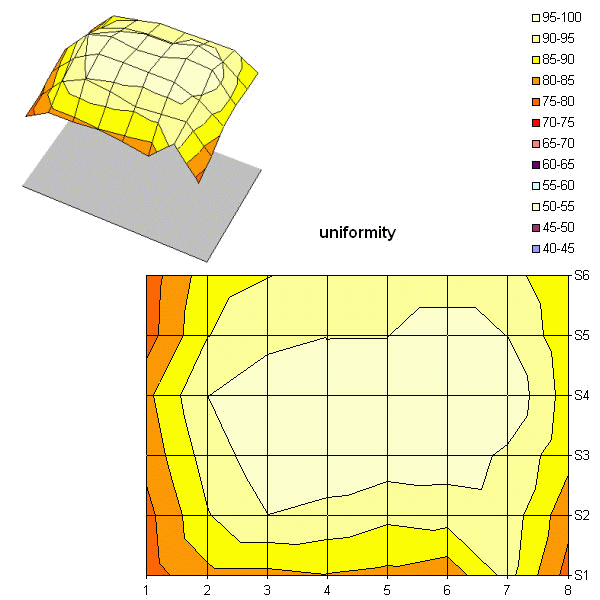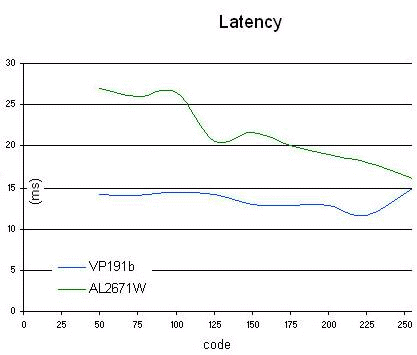LCD TV Set Fall Preview
Spatial Uniformity
We measured spatial uniformity over the panel with our second test sensor.
For those of you unfamiliar with our testing procedures, we set the panel at 50% brightness and 50% contrast and measure the uniformity of the lighting on a white image separated into 64 areas of equal size. The brightest point is considered to be 100%, and the previously measured black value is considered 0%, with the other values we log distributed between them.

The graph tells no lies - the lower part of the panel was darker than the upper part. Also note that the little notch at the lower right of the panel in the graph was very visible when the picture was dark, causing a whitish halo of light.
16 Ms Going Downhill
The AL2671W is specified at 16 ms, and - at least for sudden white-black-white transitions -16 ms is what we measured.

The curve shows the different latency values for different levels of gray. A black-white alternation is shown on the curve by a point at X-axis 255, a black-gray transition produces a point at X-axis 125, a black-gray alternation shows as 50, etc.
The official ISO latency rating specified by the manufacturer is only for black/white transitions (0/255). While the value we measured agrees with the manufacturer on this point, it's not an accurate assessment of the real responsiveness of the panel.
Stay on the Cutting Edge
Join the experts who read Tom's Hardware for the inside track on enthusiast PC tech news — and have for over 25 years. We'll send breaking news and in-depth reviews of CPUs, GPUs, AI, maker hardware and more straight to your inbox.
As nuances became more subtle, performance suffered. The AL2671W logged a latency of 26.5 ms in the worst cases. That's not a catastrophic result, since after all a TV set is not a computer monitor. You don't play games on a TV the same way you do on a computer. But if you're a lover of fast-action games with the Xbox or GameCube (F-Zero, for example), the latency can have an impact on your gaming experience.
Most Popular

